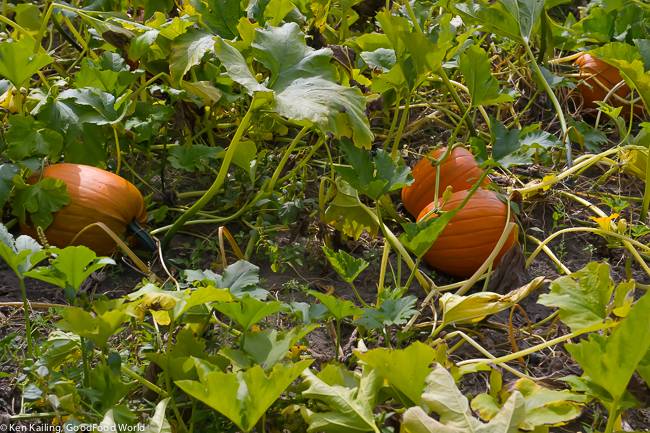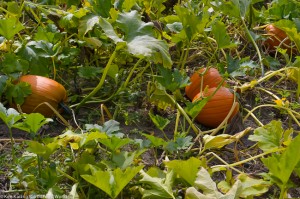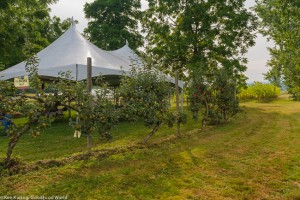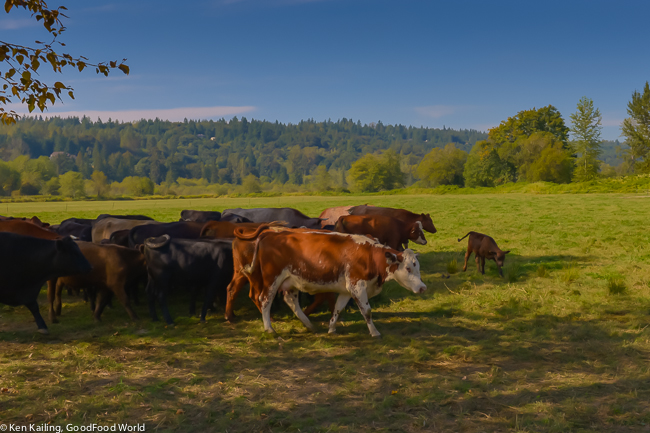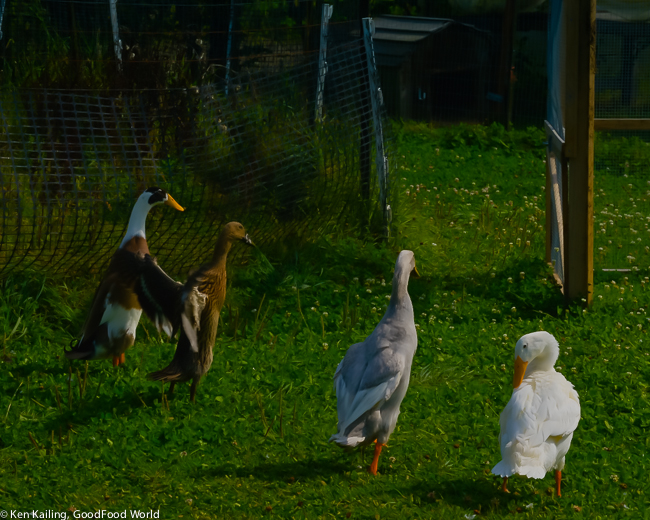(Click on any image for a larger view)
This Much and No More
In any consideration of agrarianism, this issue of limitation is critical. Agrarian farmers see, accept, and live within their limits. They understand and agree to the proposition that there is “this much and no more.” Everything that happens on an agrarian farm is determined or conditioned by the understanding that there is only so much land, so much water in the cistern, so much hay in the barn, so much corn in the crib, so much firewood in the shed, so much food in the cellar or freezer, so much strength in the back and arms—and no more. This is the understanding that induces thrift, family coherence, neighborliness, and local economies. Within accepted limits, these become necessities. The agrarian sense of abundance comes from the experienced possibility of frugality and renewal within limits.
Wendell Berry, The Agrarian Standard
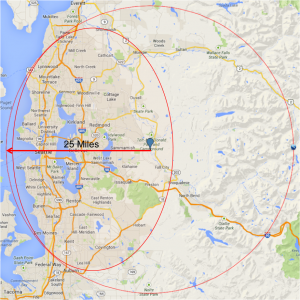
Disappearing Farmland
Development pressure in Washington’s King County over the last 60+ years has chipped away at suburban and exurban agricultural land until more than 2/3 – more than 100,000 acres – has disappeared. What remains is increasingly used for livestock and horse farms (equestrian rather than edible pursuits). At the same time, the amount of acreage dedicated to market crops increased by more than half.
King County, which includes Central Puget Sound, protects approximately 41,000 acres in five Agricultural Production Districts through the use of a Comprehensive Plan, land use and zoning regulations, and the Farmland Preservation Program. Three of those APDs are tucked up against major Seattle suburbs, including upper income Redmond and Sammamish. Farms located in the Snoqualmie and Sammamish APDs are within easy access of nearly 2½ million people.
Not Bigger, But Better
Erick and Wendy Haakenson, and their son David and his wife Kristin, are farming in a floodplain skirted by the Snoqualmie River. An active farm nearly for 25 years, Jubilee Biodynamic Farm is home to one of the largest and oldest Community Supported Agriculture (CSA) programs in the state.
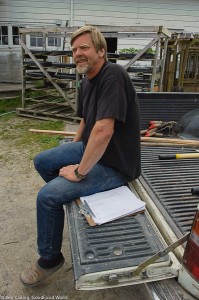
Jubilee is an intensively managed, diversified farm comprised of 14 acres of fruits, vegetables, and grains and around 35 acres devoted to beef cattle, pigs, sheep, chickens, and ducks. With the help of 3 employees and 80 work-share volunteers – who commit 4 hours a week during the growing season in exchange for 22 weeks of summer fruits and vegetables – the Haakensons grow a wide variety of crops. “We grow virtually every crop that we can. We’ve tried them all and stick to those that grow reliably,” says Erick. “We tried sweet potatoes, but dropped them. They were more often unsuccessful than successful. We don’t give up on many…”
Slowly developing a “closed herd” of cattle – all the cows are born, raised, and harvested on the farm – Erick and David now have 40-45 cow/calf pairs and 40-45 yearlings. Grass-fed beef cattle raised using organic processes take longer to reach harvest weight (18 to 24 months) than do conventionally raised cattle (14 months).
By moving the cattle from one fenced paddock to another every day, and twice a day as the summer progresses, it is possible to feed that many in such a small space. Cattle that have reached market weight are harvested in June (at summer solstice) when the grass is at its peak.
Four Key Revenue Streams
Farms of all sizes are working to create close relationships with their customers, whether those are CSA members, institutional buyers, chefs, or wholesale distributors. And every farmer, like any other entrepreneur, has to identify – or create – and capitalize on a unique marketing advantage. Erick says, “My unique marketing advantage? Being located within 30 miles of an enormous population of very progressive people.” Does that mean aggressive marketing to support big growth strategies? Not for Jubilee Farm.
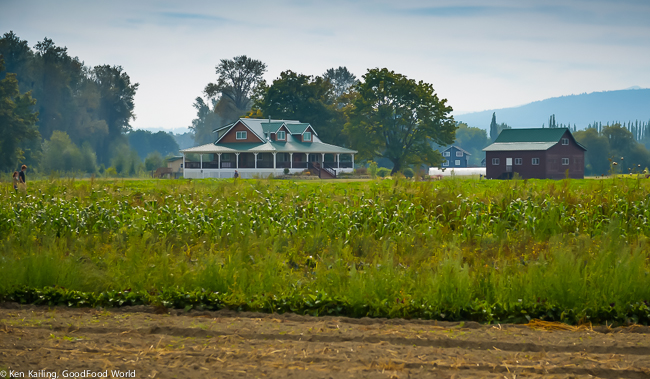
“We crop about 14 acres, and this is enough,” says Erick. “We can make a living off this. We could make more money, but we’ve drawn the line and said we have enough. Regardless of the business you’re in, if you want to run a little harder, work a little longer, and ask for more effort from your staff, you can always make more money.
#1 CSA
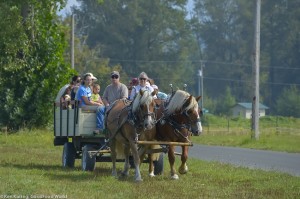
Because central Puget Sound is home for a large number of people who are committed to eating locally and seasonally, Jubilee’s 400-member CSA has been consistently sold out, year after year. Word of mouth brings in new families as members leave. And unlike larger growers in the Valley who are seeking to grow rapidly, the Haakensons include only their own products in the CSA summer shares. If it isn’t grown on the farm, it isn’t in the box.
#2 Agritourism
Considerable space is dedicated to the production of pumpkins, squash, and gourds on Jubilee Farm, and in the month of October they bring in big dollars. Every weekend is a Pumpkin festival that includes a U-Pick pumpkin patch, hay rides, a kid’s hay maze behind the barn. Weekdays there are tours for school children; the October 2013 calendar showed 139 slots booked and confirmed. And the families that come to the farm to get pumpkins are exactly right for a long-term relationship as a CSA member.
#3 Livestock
The moniker “Estate Beef” is applied to beef cattle bred, born, and raised on the same farm, and for Jubilee it means a premium price. Just this year, Erick and David have completed loop. Not only are the animals a source of considerable income, but they produce composted manure from winter confinement which provides nearly all the “fertility” used on the farm.
“We view our farm holistically, as a living system,” says Erick. “It is our goal to meet the needs of the farm from the farm. We aren’t going out and bringing in petroleum-based synthetic fertilizers.” While the Haakensons are still bringing in trace minerals like selenium, they are exploring crop varieties that could capture usable selenium from the soil.
#4 Marketing Co-operative
This year Erick joined forces with Matt Tregoning, his neighbor and co-owner of Sol to Seed Farm, to launch the Snoqualmie Valley Farmers Co-operative. “We live so close to the city on very expensive land and where costs are so high,” says Erick, “that we just can’t sell our products to produce distributors at wholesale prices.”
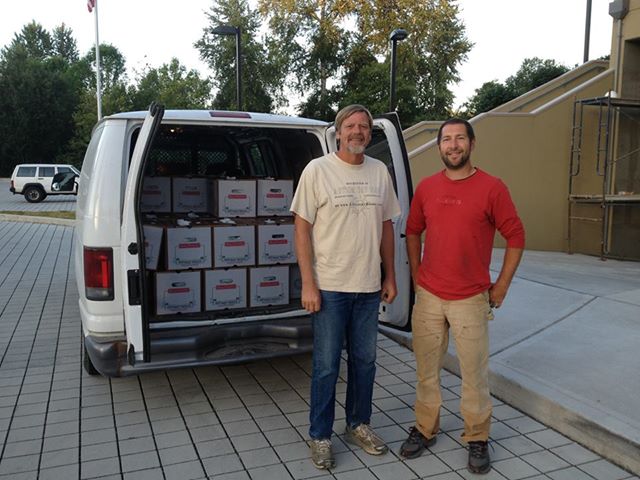
Organics trucked in from California or imported from Mexico are priced so low that farms like Jubilee can’t compete. And while it is possible to sell at top dollar through farmers markets, that is a costly sales channel too, requiring trucking to and from the market and paid farm stand staff.
Erick and Matt are not looking for farmers market prices, but they can’t sell at wholesale prices either.
Seeking to move beyond selling direct to consumers, the Co-op is reaching out to an educated, committed clientele that understands the value of supporting a local economy and local food systems, respects judicious use of the land, and supports a living wage for farm workers.
And it appears that the Co-op has found their target market. In 2006, The Healthy Food in Health Care Pledge was launched in response to a growing awareness that our food system is misaligned with our health care system, that conventional production and processing are having negative impacts on public and environmental health. Hospitals and food service operations in Puget Sound – and across the United States – have signed the pledge signaling their interest in local, nutritious, and sustainable food.
It’s not just healthcare institutions that are looking for healthy food. The Snoqualmie Valley Farmers Co-op delivered 1200 bags of produce to low-income, homebound seniors enrolled in local Meals on Wheels programs in partnership with the City of Seattle Human Services Aging and Disability Division.
Flood Plain Farming
As demand for local food increases, though, Erick expects to see changes in the Snoqualmie Valley. Because Jubilee is located in a flood plain, he won’t be considering any kind of “season extension” in the near future. The farm is home to temporary buildings – and temporary fencing – on most of the property since it is regularly flooded in late fall and winter. Any permanent greenhouses or hoop houses are likely to be washed downstream.

During record floods, all road access around the farm to the nearby towns of Carnation and Duvall is closed, as happened during the floods of 1990, 2006, and 2009.
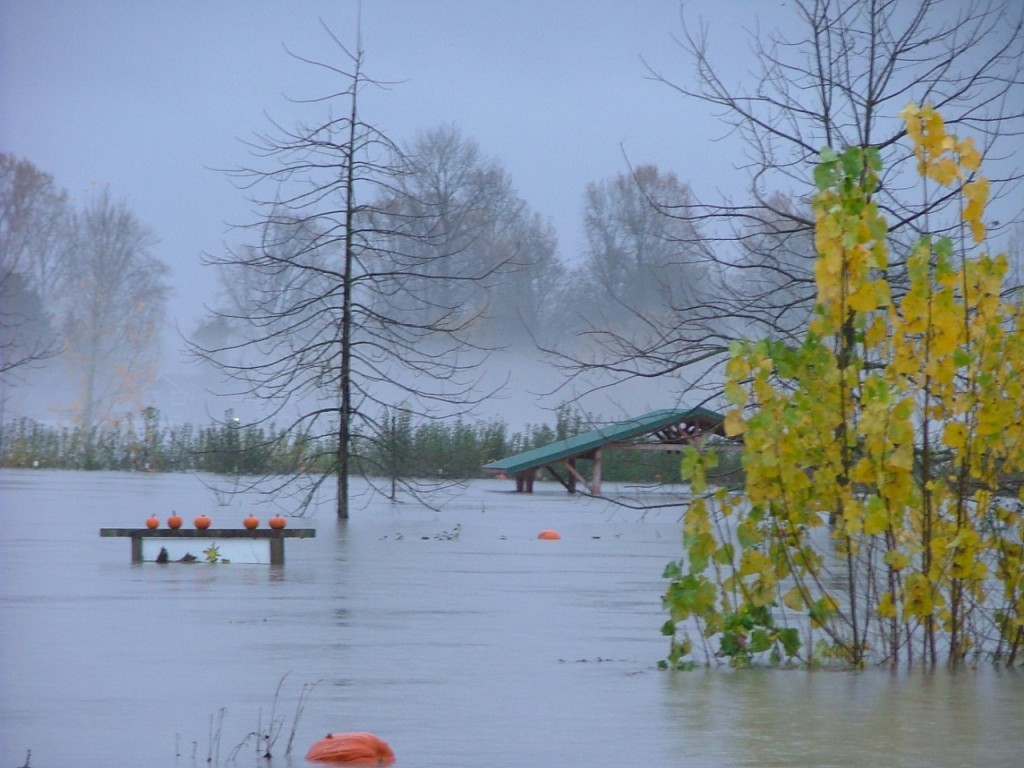
Just 5 miles or so up river of Jubilee Farm is the Snoqualmie Ridge planned community. The first half of the project has been completed and includes 2,250 housing “units,” a business park, and a retail center, as well as a private golf course. The rest of the project – to be completed in 2016-2018 – will add an additional 1,850 housing units, a hospital, and more retail.
Erick has dedicated much of his time to the Snoqualmie Valley Preservation Alliance (SVPA) which has given a voice to farmers, business owners, and families in the valley that have been impacted by all that upstream development and the widening of the Snoqualmie River that took place in 2005. The SVPA is also working to develop a watershed improvement district, to support and be supported by Valley landowners with water rights. Conservation planning and ecologically sensitive “green” development is necessary for the long-term success of agriculture in the Snoqualmie Valley.
Better, Not Bigger – This Much and No More
Growth is not part of Erick’s vision of the future; he sees his real opportunity as doing a better job at what he already does now. Searching for better techniques for weed control, better techniques for composting, and better techniques for returning the compost to the earth, he simply wants to become better, not get bigger. His goal is to create a farm with character that is a place where people want to experience and enjoy the land in harmony with nature.
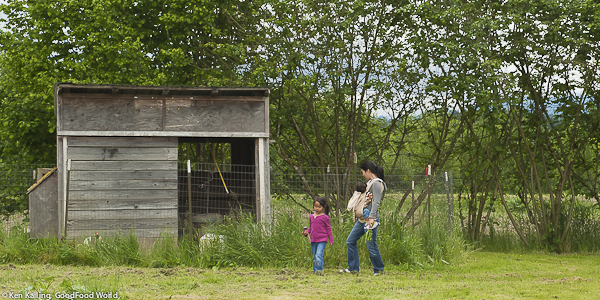
“I believe that on a farm like Jubilee there is an underlying spiritual power that comes from the interaction between the animals, the crops, and the people. It’s a wonder because it works together,” says Erick. “Our interactive farm is educational; children see the animals and realize that at some level the fertility for the farm comes from the animals. They see the vegetables and fruit growing. They see the connection between the grain and bread.”
How does farming compare to Erick’s previous career as a commercial fisherman?
“I faced a lot of risk in the Bering Sea. You’re out there all by yourself against brutal elements that have no interest in you at all. There is a lot of risk in farming too, but I’ve never gotten seasick once on the farm; I’ve never knocked on death’s door like I did on the boat. I’m working with good people and have good customers and that makes the farm work.”
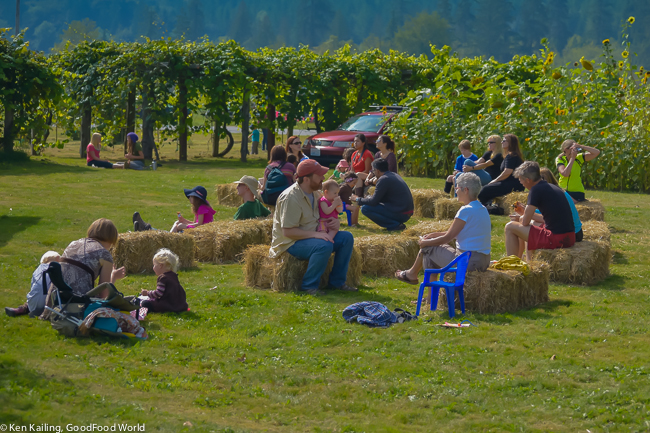
More Reading
Preserving Our Farmland: PCC Farmland Trust and Jubilee Biodynamic Farm
Jubilee Biodynamic Farm: Close Community Connection
New Snoqualmie Valley Farmers Co-op Delivers Organic Produce to Seniors
Waist Deep in Mud – Too Thick to Pour, Too Thin to Plow

